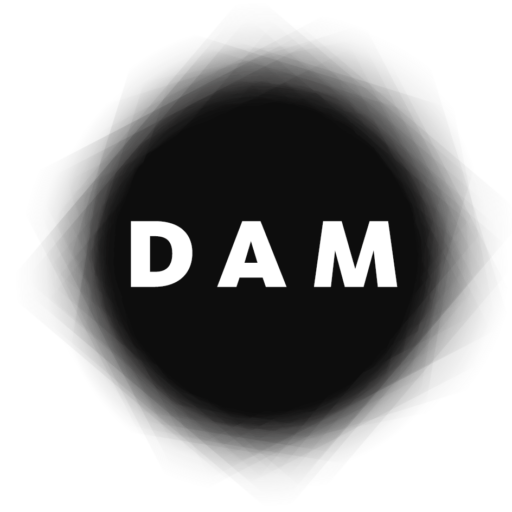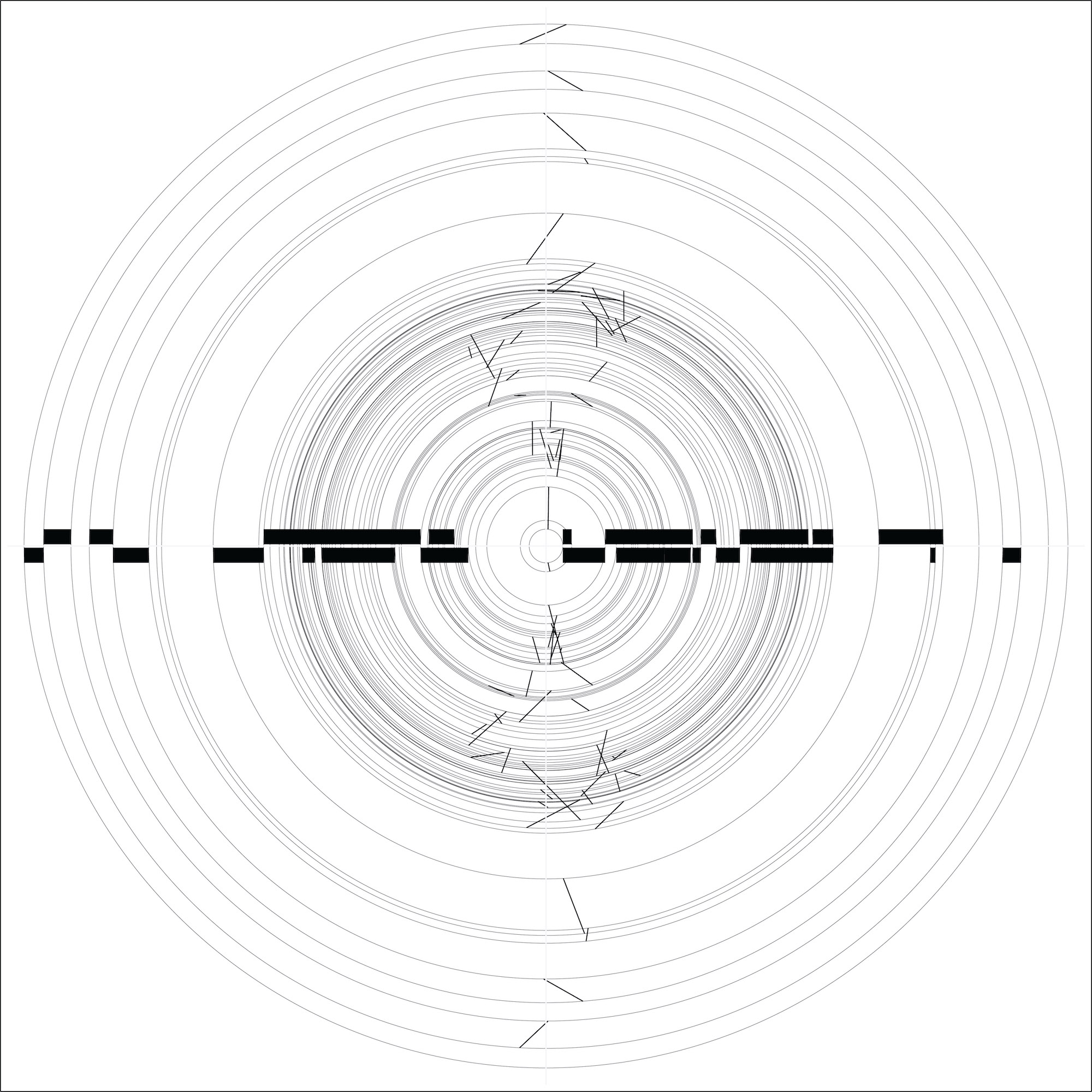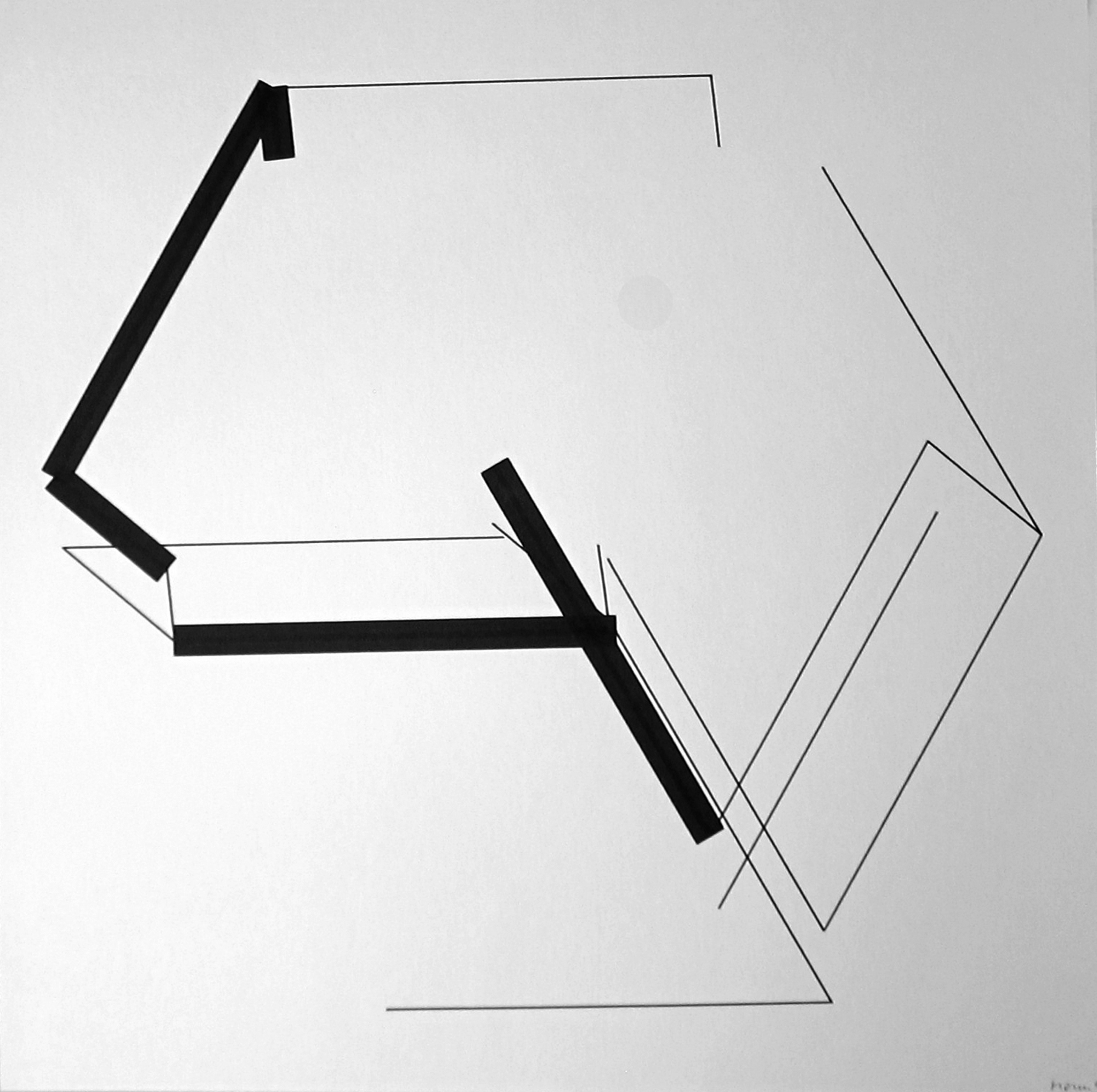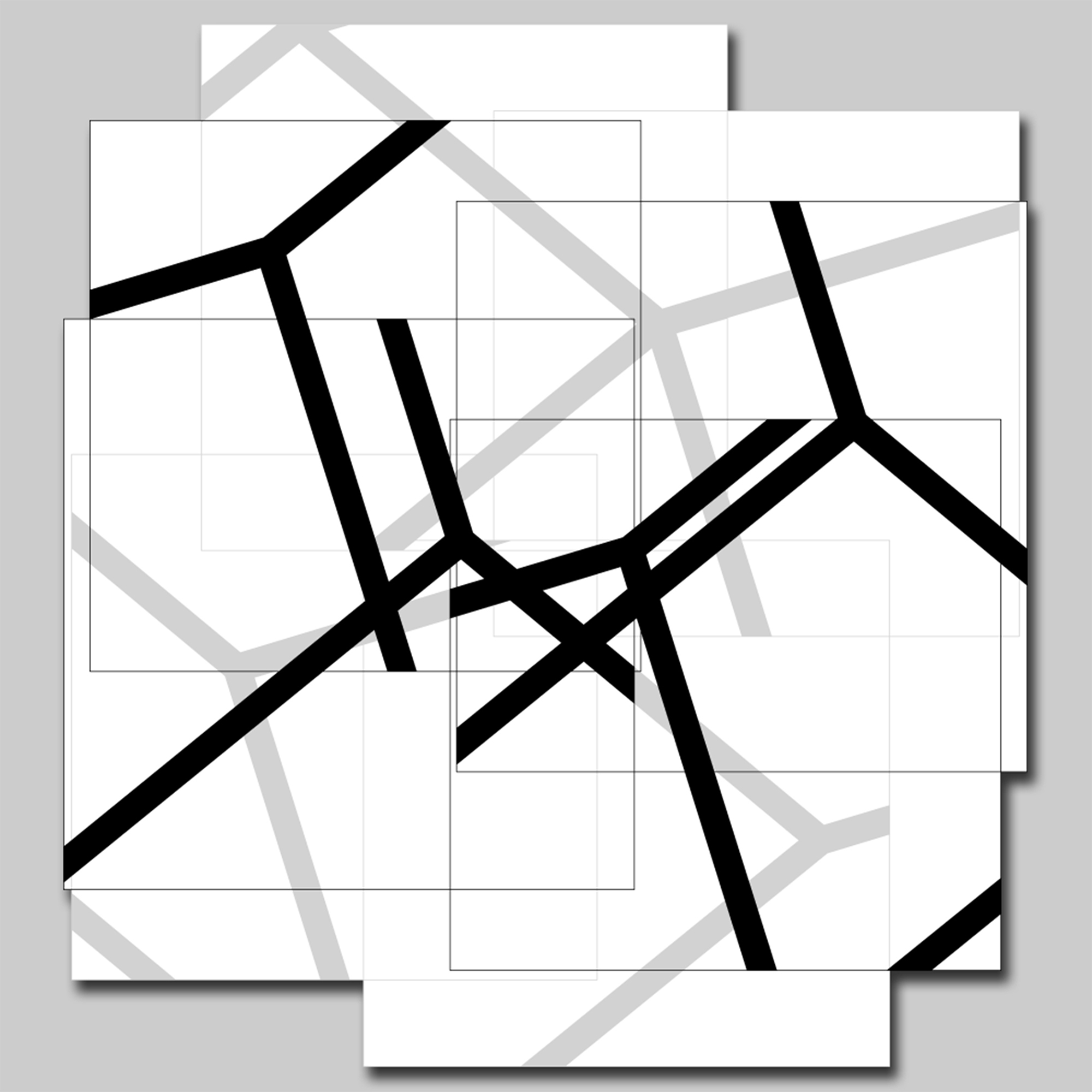
A pioneer of digital art, Manfred Mohr programmed his first computer drawings in 1969, influenced by Max Bense’s information aesthetics and encouraged by the computer music composer Pierre Barbaud. His successful artistic career spans over fifty years, with hundreds of exhibitions in galleries and museums worldwide.
Website of Manfred Mohr:
www.emohr.com
algorithmic modulations (2019)
In this series, one randomly chosen diagonal path through a 12-D hypercube is selected and placed in three different angular positions. The diagonal-paths become visible as transparent color bands. A thin horizontal black line is drawn starting from each vertex (of all three diagonal paths), crossing the vertical center of the image and continuing to the opposite side. In addition, for each vertex a slightly thicker horizontal black line is drawn starting from the vertical center of the image and continuing to the negative x-value of the respective vertex (reflection from the vertical center). The music related horizontal lines were initially used in Artificiata I, 1969 and then again on numerous occasions.
Transit-Code (2017-2018)
In his search for visualizing his artistic ideas writing code, Mohr has occasionally rewritten or abandoned an algorithm that was not successful, then worked on them again at a later date. In the P2300 series from 2017, he used the same algorithm from the work series P1680 (2014), which consists of an n-dimensional diagonal-path divided into its even and odd segments. In the P2300 series, each square is bent 180 degrees and rotated, generating a circular form.
Artificiata II (2012-2015)
This series is named after Mohr’s first visual artist book, Artificiata (1969), which was also his last hand-drawn artwork. At the time, he imagined a second version of this work which would be based on algorithms and calculated and drawn by computer, and 44 years later he created a second visual book that rendered his initial ideas in algorithmic drawings. The series comprises four parts: baseline – artificiata II (2012 – 2013), traces – capturing the history of n-dimensional rotations (2014 – 2015), projections and dimensions (2013 – 2014), and parity – fracturing n-dimensional diagonal paths (2014 – 2015).
parallelResonance (2009-2011)
Inspired by his exploration of a “surrealistic geometry” in the mid 1960s, which consisted in exploring the tension fields created by the voids between geometric elements in a visual composition, Mohr develops the same principle in this series through an algorithm. Here, two randomly selected and superimposed 11-dimensional diagonal-paths describe white and black forms, projected on a colored background. At times, the black form interchanges its color with the background to further create new visual relatins in form and tension fields.
klangfarben (2006-2007)
Following a logic inspired by the rules of “serial music,” Mohr explores the 40 billion possible diagonal paths in an 11-d hypercube using four sets of eleven diagonal paths rendered with three different line widths, created by a custom software written by the artist. This process is shown on two square LCD screens, one displaying 2 to 10 diagonal paths rotating in slow motion, while the other depicts a fixed composition. The screens are placed in a 90 degree angle to encourage the viewer to observe either one or the other.
subsets.motion (2003-2005)
Using the same computer program as subsets (2003), a series of self-built computers execute the 11-D animation program with each installation using a unique set of parameters which determines the sub-structure. Each time the program is restarted it picks a new set of 11-d random angles and increments (based on the present time and date), which results in unique images.
subsets (2003-2005)
‘Subsets’ is a work phase based on the 11-d hyper-cube. The algorithm written by the artist selects a subset of cubes from a repertoire of 42240 cubes inherent to the 11-d hyper-cube and decides which sides shall be black or white. Clipped by a defined window, this structure rotates in front of a green background. Since the above mentioned subset is by definition incomplete, the green background occasionally becomes visible, as the structure is rotating in 11-dimensions. Mohr describes this system as “visual music,” inspired by his passion for action painting and free jazz.
space.color.motion (2002-2004)
This series is based on the same computer program as space.color (written in 1999), which is run on self-built computers. The program executes a 6-D animation with each installation using a unique set of parameters which determines the sub-structure and color set. Each time the program is restarted it picks a new set of 6-d random angles and increments (based on the present time and date), resulting in unique compositions.
space.color (1999-2003)
In this work phase, Mohr introduces color for the first time, after working for more than three decades in black and white. The use of color responded to the increasing complexity of his work, which forced him to look for a visual expression that went beyond the binary system of white and black. The colors, however, are not meant to convey a meaning in themselves, but rather used randomly to highlight the spatial ambiguity of the compositions. The algorithm is based on the 6-dimensional hypercube, which allows to draw 720 different diagonal paths, from which four are selected each time and drawn with thick lines, their vector connected with thin lines. The connecting lines form planar structures with randomly assigned colors.
Half Planes (1995-1998)
This work phase is based on the 6-D hypercube. As indicated for the “Laserglyphs” (1991), this complex structure has 32 diagonals from which 23040 “diagonal-paths” can be calculated combinatorially. A random selection of two “diagonal-paths” from this alphabet of signs provides the building blocks for each work. In the grey paintings, the “diagonal-paths” are represented by thick white lines. The vector pairs which complete the quadrilaterals are represented by thin black lines. The quadrilaterals are colored in grey to create the shape of the painting. In the drawings, the “diagonal-paths” are represented by thick black lines and the vector pairs are represented by thin black lines. In the metal reliefs, the art-work is composed of 3 bent flat metal strips. The strip representing the contour is painted white, and the 2 strips representing the “diagonal-paths” are painted grey and black respectively.
Counterpoint (1993-1995)
In this series, two diagonal-paths (through the 6-D hyper-cube) are chosen in the way described in “Laserglyphs”. Each work consists of one thin black line and one thick grey line drawn on canvas. The line width is inversely proportional to the decrease in color intensity from black to grey. To visually maintain the inherent connectivity only such lines can be chosen which have at least one common point in the structure. Both lines have a visual relationship comparable to the counterpoint of a succession of sounds in music. For each work, the picture format is a result of the size and location of the two diagonal-paths in relationship to one another.
Laserglyphs (1990-1993)
Mohr works in this series with the 6-dimensional hyper-cube, a structure that has 32 diagonals and 720 different “diagonal-paths”. For each “Laserglyph” a random selection of four “diagonal-paths” from this repertoire of 23040 (32×720) possible paths is made. The 2-D dimensional projection of such groups of four are cut out of a metal plate by a laser to form a relief. Each of the drawings show the 720 diagonal-paths between between 2 diagonally opposite points in the 6-D structure.
Line cluster (1989-1990)
The chosen geometric structure in this series is the 5-dimensional Hyper-cube, which is built from a set of eighty lines. A subset of twenty lines, containing four lines from each “dimensional-direction” are chosen from this structure. Each “dimensional-direction” consists therefore of four parallel lines, represented by three thin lines and one thick line (drawn in a given 5-dimensional rotation).
Dimensions II (1986-1989)
In this work phase, the four-dimensional rotation of a hyper-cube becomes an additional element in generating signs and shapes. A four-dimensional hyper-cube can also be seen as a structural relationship of eight interconnected cubes. In this particular work, each of these eight cubes are looked at through a square window (the 0,0,0 rotation of each cube). Four of the cubes are represented by their frontal view (black) and four by their back (grey). This partitioning of black or grey is a combinatorial element in the algorithm of this work.
Divisibility II + III (1984-1986)
In the second part of this work phase, a molecular-like growth is created with the “four-cut” as its seed. Growth results from algorithms of graph patterns deciding which “out-lines” of the quadrants created in the preceding generation is used to produce the “four-cut” of the next generation. In a third part, the contours of the “four-cut” is seen as a “shadow-form”, a two dimensional visual history of the cube-growth. The connecting path between the center point of one “four-cut” and the center point of the next “four-cut” is shown as a black line, the growth-line. Similar to the spine in a body, the growth-line is embedded in the shadow-form.
Divisibility I (1980-1984)
In “Divisibility”, the cube is used again as a fixed structure to generate signs. The cube is divided into four sections by a horizontal and a vertical cut. Four independent rotations of a cube are projected onto the corresponding quadrants created by the cut. In order to visually stabilize the structure, two diagonally opposed quadrants (top right and bottom left), contain the same rotation. In the first part of this work phase, the “four-cut” is the basic structure with which the “out-lines” form shapes and the “in-lines” form signs.
Dimensions I (1977-1979)
In this series, the graph of a four-dimensional hyper-cube is the basic generator of signs. This graph is a two-dimensional representation of the hyper-cube, indicating relationships between points, lines, squares and cubes, inherent in this structure. A global structure is generated either by combinatorially selecting lines from the cube or by showing connecting paths between 2 given diagonally opposite points on the graph (diagonals). A 4-d hyper-cube has 8 pairs of diagonally opposite points. A “diagonal-path” is the connection of 2 such diametric points through the network of edges of this complex structure (there are 24 “diagonal-paths” for each of the 8 diagonals).
Cubic limit II (1976-1977)
In the second part of this series, cubes are divided into two parts by one of the Cartesian planes. For each image the two partitions contain independent rotations of a cube. They are projected into two dimensions and clipped by a square window (the projection of a cube at 0,0,0 degrees). By rotating both parts of these cubes in small but different increments, long sequences of images are developed.
Cubic limit I (1973-1976)
In “Cubic Limit”, Mohr introduces the cube into his work as a fixed system with which signs are generated. In the first part of this series, an alphabet of signs is created from the twelve lines of a cube. In some works, statistics and rotation are used in the algorithm to generate signs. In others, combinatorial, logical and additive operators generate the global and local structures of the images.
Early algorithms (1969-1973)
During these years, Mohr introduces into his work a logical and automatic construction of pictures, using algorithms for the first time. The artist writes computer programs and obtains drawings realized by a computer controlled drawing machine (plotter). With a choice of different line characteristics, an alphabet of arbitrary generated elements is created. Individual algorithms are invented for each work from which all forms and structures are solely generated. The algorithms are built from imposed as well as from random selection principles which the artist called “aesthetical-filters”.
Hard edge (1966-1969)
This work phase (1966-69) introduces geometry and constructibility (but not yet the computer) into Mohr’s work. In a subjective selection process, geometric elements influenced by electronic and other technical signs are created and distributed over the entire pictorial surface. They are mobile signs, that means, they are exchangeable signs. Since all signs (forms) are surrounded by a pictorial force, they create in their juxtaposition a network of abstract visual tension.
Early work (1960-1966)
Mohr’s early artistic work was influenced by atonal music, modern Jazz and abstract expressionism. The art of K.H. Sonderborg gave him a profound visual guidance and the understanding of Max Bense’s philosophy a unique direction. As a consequence, geometry and the reduction of his visual vocabulary to black and white as binary decisions, took more and more importance in his work after 1963.
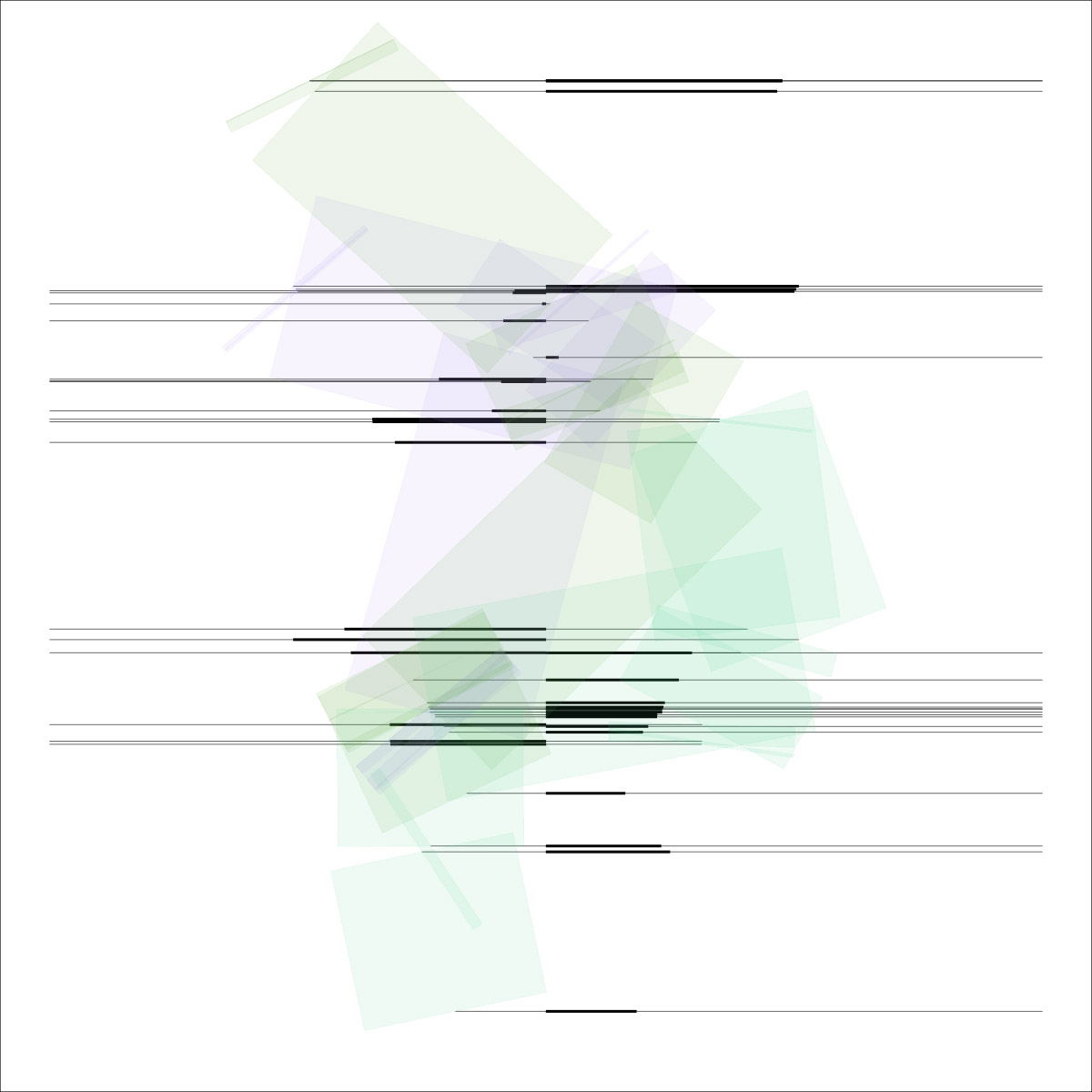
Artist’s Statement, 2002
Manfred Mohr
Ylem Journal, Artists using Science & Technology, nº 10, vol 22, Sept. – Oct. 2002
In my artistic development I did not have the typical constructivist background. I was an action painter and jazz musician. Through a development of consciousness, I detached myself from spontaneous expressions, and, in the mid-60’s, turned to a more systematic, geometric form of expression. It was mainly the writings of the German philosopher Max Bense and the French composer Pierre Barbaud that radically changed my thinking —pointing to a rational construction of art. Since 1973, in my research, I have been concentrating on fracturing the symmetry of a cube (including since 1978 n-dimensional hypercubes), using the structure of the cube as a “system” and “alphabet.”
The disturbance or disintegration of symmetry is the basic generator of new constructions and relationships.
The computer became a physical and intellectual extension in the process of creating my art. I write computer algorithms, i.e., rules that calculate and then generate the work which could not be realized in any other way. It is not necessarily the system or the logic I want to present in my work, but the visual invention that results from it. My artistic goal is reached, when a finished work can visually dissociate itself from its logical content and convincingly stand as an independent abstract entity. Over the past two decades I had many solo and group shows in galleries and museums worldwide.

Pforzheim (Germany), 1938
Manfred Mohr studied art at the Art School Pforzheim and the École des Beaux Arts in Paris. He developed an Abstract Expressionist style while also playing the saxophone in Jazz clubs around Europe. In 1961, he discovered the writings of Max Bense on rational aesthetics, which had a profound influence on his work. Mohr adopted geometric abstraction and used only black and white in his compositions for more than three decades. In 1966, he designed his first interactive kinetic sound machine and built the electronics, something he would also do in later works. In 1967, he met the composer Pierre Barbaud and learned about algorithmic procedures, writing his first computer programs in the FORTRAN IV programming language. Initially, he would draw the output of the programs by hand, since he did not have a plotter. In 1970, the Computing Centre at Météorologie Nationale in Paris granted him access to their Benson flatbed ink pen vector plotter, with which he created his algorithmic drawings until 1983. Already known in the Paris art scene for his geometric paintings, in 1971 he had the first one-person show of computer generated art in a museum. Titled Manfred Mohr – Computer Graphics – Une Esthétique Programmée, the exhibition took place at ARC, Musée d’Art Moderne de la Ville de Paris, from May 11th to June 6th. In 1973, Mohr decided that his work needed a “visual instrument … which expresses a graphic system.” He chose the cube and hypercube, which would become recurrent elements in his algorithmic and generative compositions. In 1983, the artist moved to New York and established his own computing centre with one of the first affordable mini-computers and a flatbed plotter. Since 1999, Manfred Mohr re-introduced the use of colour into his work and since 2002 he created real-time screen based computer animations, using computers that he built himself. The hypercube continues to be a source of inspiration for Mohr, whose work keeps evolving and is regularly shown in exhibitions in art galleries and museums. In 2018, he was elected to the SIGGRAPH Academy “for pioneering achievements in creating art through algorithmic geometry.”
Mohr’s successful career spans over fifty years with hundreds of one-person and group shows in galleries and museums worldwide. His work is featured in numerous collections, such as Centre Pompidou, Paris; ZKM | Center for Art and Media, Karlsruhe; Whitney Museum of American Art, New York; Joseph Albers Museum, Bottrop; Victoria and Albert Museum, London; Ludwig Museum, Cologne; Stedelijk Museum, Amsterdam; Kunsthalle Bremen, Bremen; Daimler Art Collection Berlin / Stuttgart; Musée d’Art Contemporain, Montreal; The Tel Aviv Museum of Art, Tel Aviv; Museum für Angewandte Kunst, Cologne; Borusan Art Collection, Istanbul; Thoma Art Foundation, Chicago. He is the 2006 recipient of the d.velop digital art award [ddaa] (later renamed DAM Digital Art Award), which honours the most important artists in the area of digital art for their life’s work or for an important group of works. Other recipients of the award are Lynn Hershman Leeson, Norman White, and Vera Molnar.
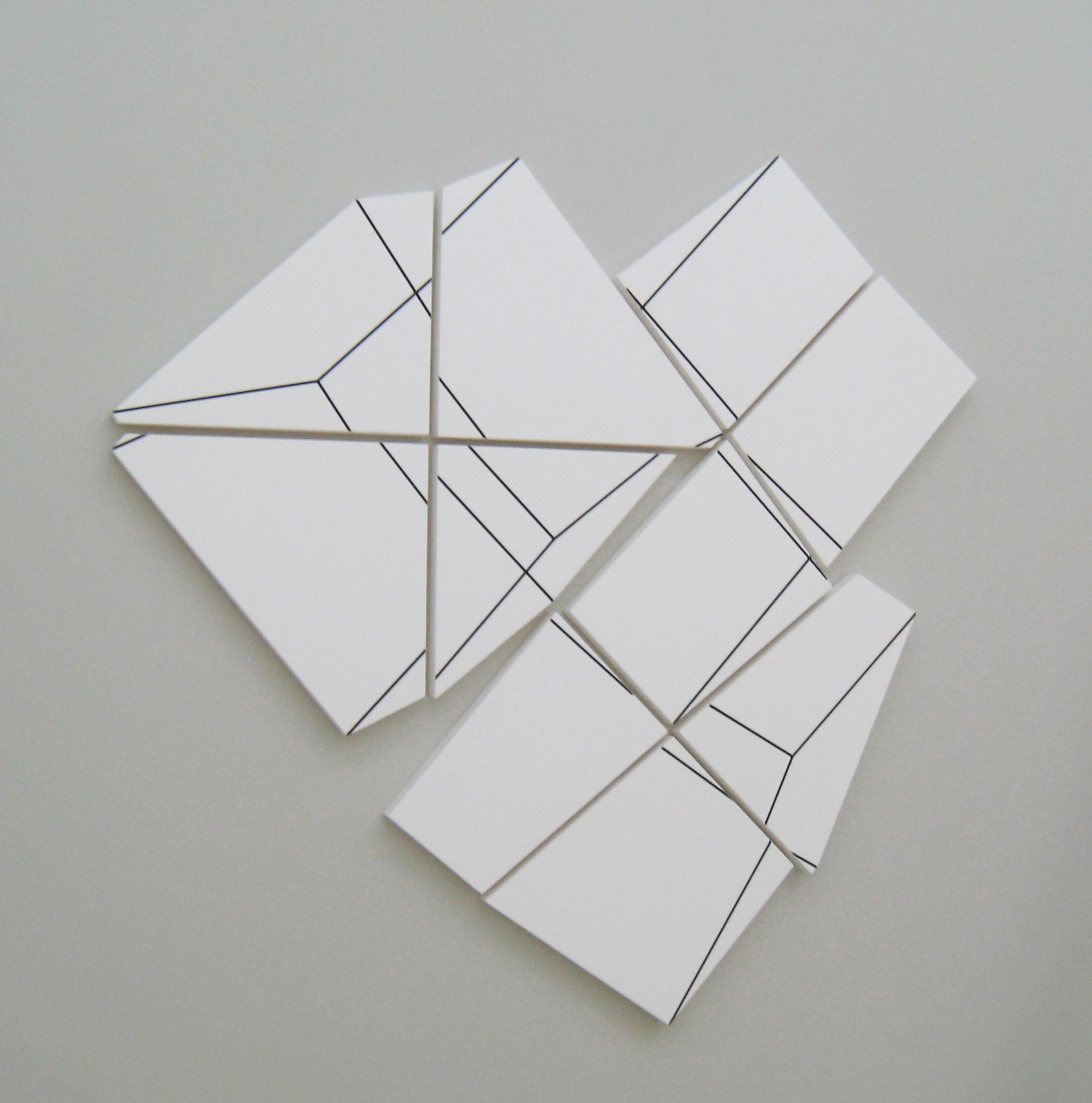
Mohr, M. (1971). Artist’s statement. In: Manfred Mohr Computer Graphics – Une Esthétique Programmée. Paris: ARC – Musée d’Art Moderne de la Ville de Paris. [EN]
–– (1974). The machine seen as an extension of us. In: Computing Europe, 28 February 1974. [EN]
–– (2002). Generative Art. In: L. Candy & E. Edmonds (eds.). Explorations in Art and Technology. London: Springer-Verlag. Chapter 9, pp. 111 – 114. [EN]
Franke, H.W. (1977). Computergrafik-Galerie: Manfred Mohr. Angewandte Informatik, October 1977. [DE]
Heaney, L. (2017). Manfred Mohr and Douglas Dodd’s in conversation at Carroll / Fletcher gallery. Systems Research Group, Royal College of Art. London, Feb. 2, 2017. [EN]
Nake, F. (2001). Manfred Mohr: algorithmic man. In: Manfred Mohr – space.color. Exhibition catalogue. Ingolstadt: Museum für Konkrete Kunst. [EN] [DE]
Sauré, W. (1969). Le système binaire dans la peinture de Manfred Mohr. 4 Soli, Torino, April 6, 1969. [FR]
VIDEO: Manfred Mohr talks about Digital Art. DAM Gallery.

Publications
1968
Catherine Millet, Manfred Mohr. Les Lettres Françaises, Paris 18. Sept 1968
Olivier Nateau, Manfred Mohr. Galerie des Arts Nr. 59, Paris 15. Nov 1968
Paul Gauthier , Une nouvelle mise en équation de la spiritualité et de la sensibilité, Manfred Mohr. Les Lettres Françaises, Paris 12. Nov 1968
Wolfgang Sauré , Le system binaire dans la peinture de Manfred Mohr. 4 Soli, Torino, April 6, 1969
Gérald Gassiot-Talabot, Manfred Mohr / Dr. Wolfgang Sauré, Manfred Mohr. From catalog “Manfred Mohr: signes géométrique”, Galerie Daniel Templon, Paris, France 1968
1971
Jacques Michel, Manfred Mohr: Le médium électronique. Le Monde, Paris, June 2, 1971
Henry Galy-Charles, A L’A.R.C. Manfred Mohr, Tisserand, Rustin, Bololini. Les Arts, Paris, 1971
Nicole Lachatre, Une Esthétique Programmée: un homme et un traceur. 01 Informatique, September 1971
De l’algorithme à l’esthétique: La Dessinatique. 01 Hebdo, May 3, 1971
Dr. Wolfgang Sauré, Triumph eines Pforzheimer Künstlers in Paris. Pforzheimer Zeitung, June 5, 1971
W. S., Mathematische Chiffren zu Grafik programmiert. Pforzheimer Kurier, June 23, 1971
André Berne-Joffroy, Manfred Mohr / Andrés Zucker, Manfred Mohrrom Catalog “Manfred Mohr: Computer Graphics – Une Esthétique Programmée.” ARC, Museé d’Art Modern de la Ville de Paris, France 1971
1972
Bernard Lorimy, Informatique et Création artistique. Flux, 63, Paris, Été, 1972
1975
Michel Conil Lacoste, Variations sur un cube: Le Tire-Ligne De Manfred Mohr. Le Monde, Paris, July 3, 1975
1977
Herbert W. Franke, Computergrafik-Galerie: Manfred Mohr. Angewandte Informatik, Oct. 1977
1980
Marie-Luise Syring, Manfred Mohr, from catalog “Manfred Mohr, Werkübersicht von 1965-1980”, Galerie Teufel, Cologne, Germany 1980
1985
Heinz Teufel, Manfred Mohr, from catalog “Manfred Mohr: Divisibility II Generative Arbeiten 1981-1984”, Galerie Teufel, Cologne, Germany 1985
1986
Dieter Mueller-Roth, Manfred Mohr. From catalog “Manfred Mohr: Divisibility III Generative Works 1985-1986”, Galerie D+C Mueller-Roth, Stuttgart, Germany 1986
1987
Dr. Bernhard Holeczek, Wer hat Angst vor Manfred Mohr? / Who’s afraid of Manfred Mohr? from catalog “Manfred Mohr: Fractured Symmetry Retrospective 1960 – 1987”, Wilhelm-Hack-Museum. Ludwigshafen, Germany 1987
1994
Thomas Kurtz, The Courage of One’s Convictions / Prof. Dr. Mihai Nadin, Alea iacta est / Dr. Marion Keiner, Manfred Mohr’s Abstract Aesthetic. from Monograph ‘Manfred Mohr’, Waser Verlag Zürich 1994
1995
Prof. Dr. Frieder Nake, Mensch + Kunst im Computerzeitalter. Freie Universität Berlin, 1995
1996
Manfred Dworschak, Manfred Mohr ist ein Purist unter den Computerkünstlern. DIE ZEIT Ausgabe Nr.42 vom 11. Oktober 1996
1998
Lauren Sedofsky, Linebreeder/ Prof. Eugen Gomringer, M. Mohr – Cubist in the Computer age. from exhibition catalog ‘Manfred Mohr’, Josef Albers Museum, Bottrop 1998
2001
Prof. Dr. Frieder Nake, form.algorithm.color. from exhibition catalog ‘Manfred Mohr – space.color’, Museum für Konkrete Kunst, Ingolstadt 2001
2003
Flash Light, Manfred Mohr and the SciArt Quest: space.color.motion. ASCI.org, Reviews, January, 2003
2005
Ralph Heringlehner, Wenn Computer mit Farben und Formen spielen new hanging at the Kulturspeicher, Collection Ruppert, SWT #300, Würzburg, December 29, 2005
Jürgen Nordmann, P-1011-A, 2005, PC/NEC 20″ – Alles Klar?
Patrick Ellis, Manfred Mohr at bitforms gallery, New York
2006
CIAC’s Electronic Magazine # 25/2006, Winter 2006
2007
Dr. Lida von Mengden, Manfred Mohr – Research in the aesthetic universe of the cube from exhibition catalog ‘Manfred Mohr – broken symmetry’, Kunsthalle Bremen 2007
Arnulf Marzluf, Manfred Mohr Bremen Kunsthalle. Manfred Mohr: Ein radikaler Rationalist
Frieder Nake, Matthias Krauss, Susanne Grabowski, The Sound of Silence in Spaces of Many Dimensions. CADE07 Conference Proceedings, Perth, Sept 12-14 2007
Christoph Klütsch, MANFRED MOHR – DIE PROGRAMMIERUNG DES EIGENEN STILS (1969-1972). Chapter 4.4 from Computer Graphik, PHD Thesis, Springer-Verlag/Wien, 2007
2008
Andreas Fillibeck, Manfred Mohr: Kunst mit Ecken und Kanten
2011
Pau Waelder, Manfred Mohr: Una estética programada. Comisariado, Innovación en cultura digital, June 7, 2011
Dylan Schenker, Original Creators: Manfred Mohr. The CreatorsProject, Blog, thecreatorsproject.com, September 05, 2011
Alicia Reuter, Manfred Mohr [DAM] Berlin
Ara H. Merjian, Reviews: Manfred Mohr – bitforms gallery. ARTFORUM, January 2012
Geeta Dayal, Manfred Mohr: New York City USA, bitforms gallery. Frieze Magazin D/E, Issue 3, Winter 2011-12
Paul May, Manfred Mohr: Réflexions sur une Esthétique Programmeé. paulmay.org, October 31 2011
Allison Meier, 1960s Computer Art Pioneer Gets a Retrospective in Chelsea. Hyperallergic.com, Sep 14 2011
Stefano Milani, The new ‘Ductus’. A Reflection on Manfred Mohr’s Drawing
Michiel Riedijk (Editor), Architecture as a Craft, (from symposium Delft University of Technology, 2009), Sun, architecture.nl,
Jordan Strafer, Manfred Mohr: Generative Artist or Software Artist?
2012
The Digital Legacies of the Avant-Garde, on-line Book, Booki, May 2012 English
Alistair Rider, Manfred Mohr: Scripted Variations. Essay from catalogue, Manfred Mohr, One and Zero Carroll/Fletcher Gallery, 2012
Mark Sheerin, Is the World Now Ready for Computer Art Pioneer Manfred Mohr? HyperAllergic, Dec. 5, 2012
Chris Newlove Horton, Manfred Mohr Plays The Machine, Turning Algorithms Into Visual Music. The CreatorsProject / Vice, Dec. 4, 2012
Zak Hulstrom, Manfred Mohr: one and zero at Carroll/Fletcher. One Stop Arts, 19 November, 2012
Catherine Mason, Manfred Mohr: A Computational Life Society, BCS, November 2012
Catherine Spencer, Manfred Mohr: one and zero, Carroll / Fletcher. This is Tomorrow, Dec. 11, 2012
Regine Debatty, Manfred Mohr: one and zero art in London, we-make-money-not-art.com, Dec. 2, 2012
2013
Roger Atwood, Manfred Mohr: Carroll/Fletcher, London. ArtNews, April 2013
The Algorithm of Manfred Mohr, 1963-now.vZKM | Media Museum, Karlsruhe, June 8 – Sept 1, 2013
Sandra Pfäfflin, Manfred Mohr, Pforzheimer Computerkunst-Pionier, wird 75 – Retrospektive im ZKM Pforzheimer Zeitung, 7 Juni, 2013
Carmela Thiele, Nie Waren Flächen und Würfen schöner – ZKM Karlsruhe würdigt den Computerkunst-Pionier Manfred Mohr mit einer Retrospektive. Badische Neueste Nachrichten, 7 Juni, 2013
Adrienne Braun, ANTWORT AUF VIELE FRAGEN – Manfred Mohr Karlsruhe, Art Das Kunstmagazin, 11 Juni 2013
Verena Hütter, Goethe Institute Germany, Kunstkalender, June 2013: Nach allen Regeln der Kunst – “Der Algorithmus des Manfred Mohr” im Karlsruher ZKM. By Every Rule in the Book – “The Algorithm of Manfred Mohr” at the ZKM in Karlsruhe
Adrienne Braun, Die Consequenz der Machine, Grosse Werkschau des Deutschen, eines Pioniers der Computerkunst – Der Algorithmus des Manfred Mohr, Karlsruhe, ZKM/Medienmuseum. Das Kunstmagazin, s. 110, Juni 2013
2015
Degla, Manfred Mohr: 1964-2011, Réflexions sur une esthétique programmée. auclucom.tumblr.com, 25 March 2015
Fabian R. Lovisa, Da staunt der Laie …, der Computerkünstler Manfred Mohr zeigt neue Arbeit in der Galerie Wack. Die Rheinpfalz, Nr. 93, 22. April 2015
Andreas Rauth, Reise zum Hyperwürfel: Margit Rosen (Hg.), Der Algorithmus des Manfred Mohr. Texte 1963 – 1979. Review of publication from Manfred Mohr’s 2013 ZKM exhibition
Jitter Magazin, Magazin für Kunst & Visuelle Kulture, 28, Mai 2015
João Roc, A Estética Programada De Manfred Mohr. Obvious Magazine, Artes E Ideias, July 2015
Blake Gopnik, At Bitforms, Manfred Mohr’s un-Renaissance Perspective. The Daily Pic, Artnet News, Wednesday, December 2, 2015
Nathaniel Ainley, Computer-Generated Art Captures a Hypercube in 2D, Manfred Mohr at bitforms gallery. The Creators Project / Vice, Nov. 7, 2015
2016
Laura Davidson, Manfred Mohr | Artificiata II | Carroll / Fletcher. Saturation Point, March 18 2016
China Xinhua Español, Londres da bienvenida pionera al arte digital de Mohr. YouTube Video in Spanish, Feb. 12, 2016
2017
Libby Heaney, Manfred Mohr and Douglas Dodd’s in conversation at Carroll / Fletcher gallery. Systems Research Group, Royal College of Art, London, Feb. 2, 2017
2019
Walker Downey, Surveying Manfred Mohr’s Five-Decade Collaboration with the Computer, New York at bitforms
Art in America, Reviews, November 2019 edition in print, Oct. 10, 2019
Charlotte Kent, Manfred Mohr: A Formal Language. The Brooklyn Rail, Oct. 2019
Charlotte Kent, Art and Algorithms: The Work of Manfred Mohr
Litro Magazine, US Edition, Dec. 25, 2019
